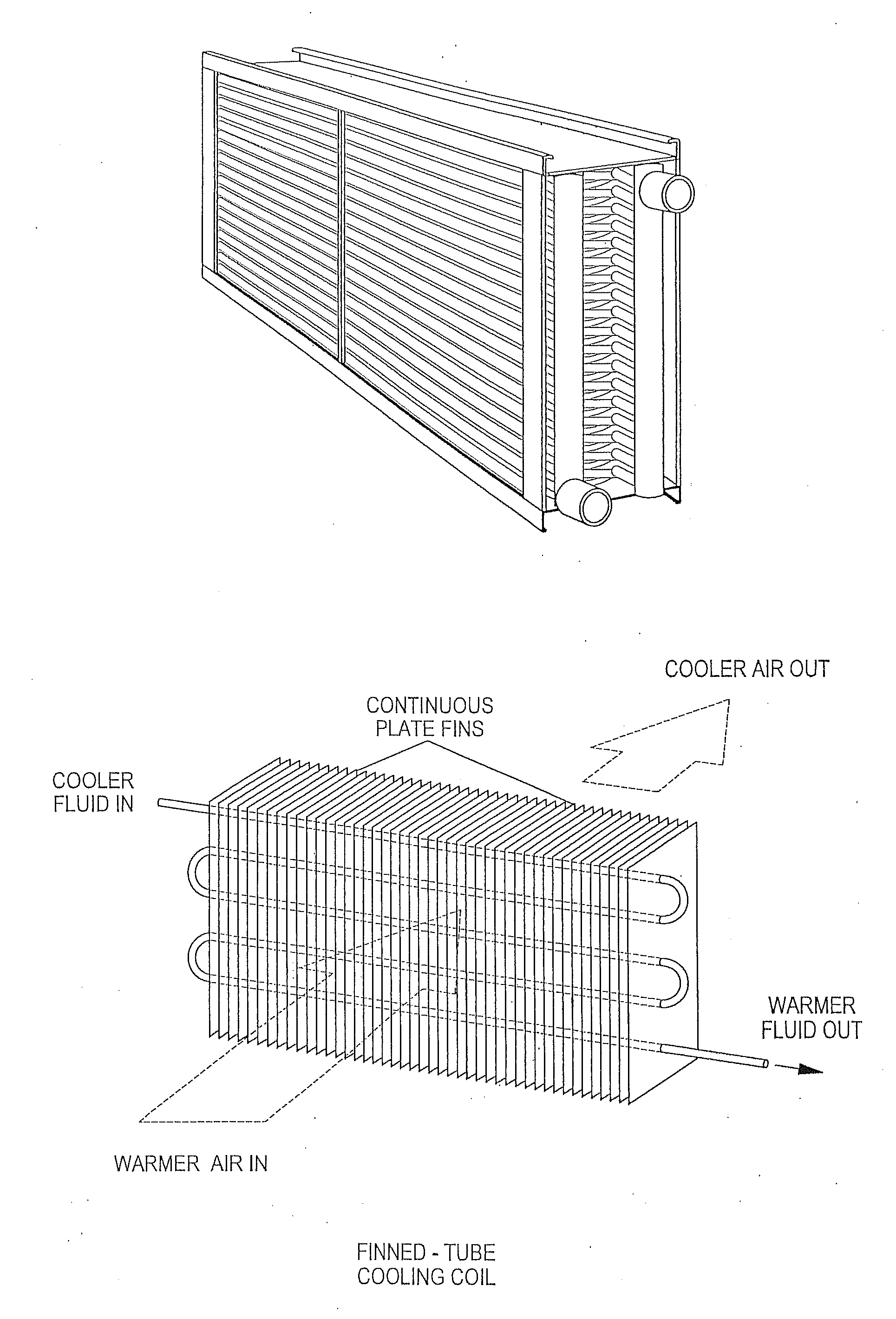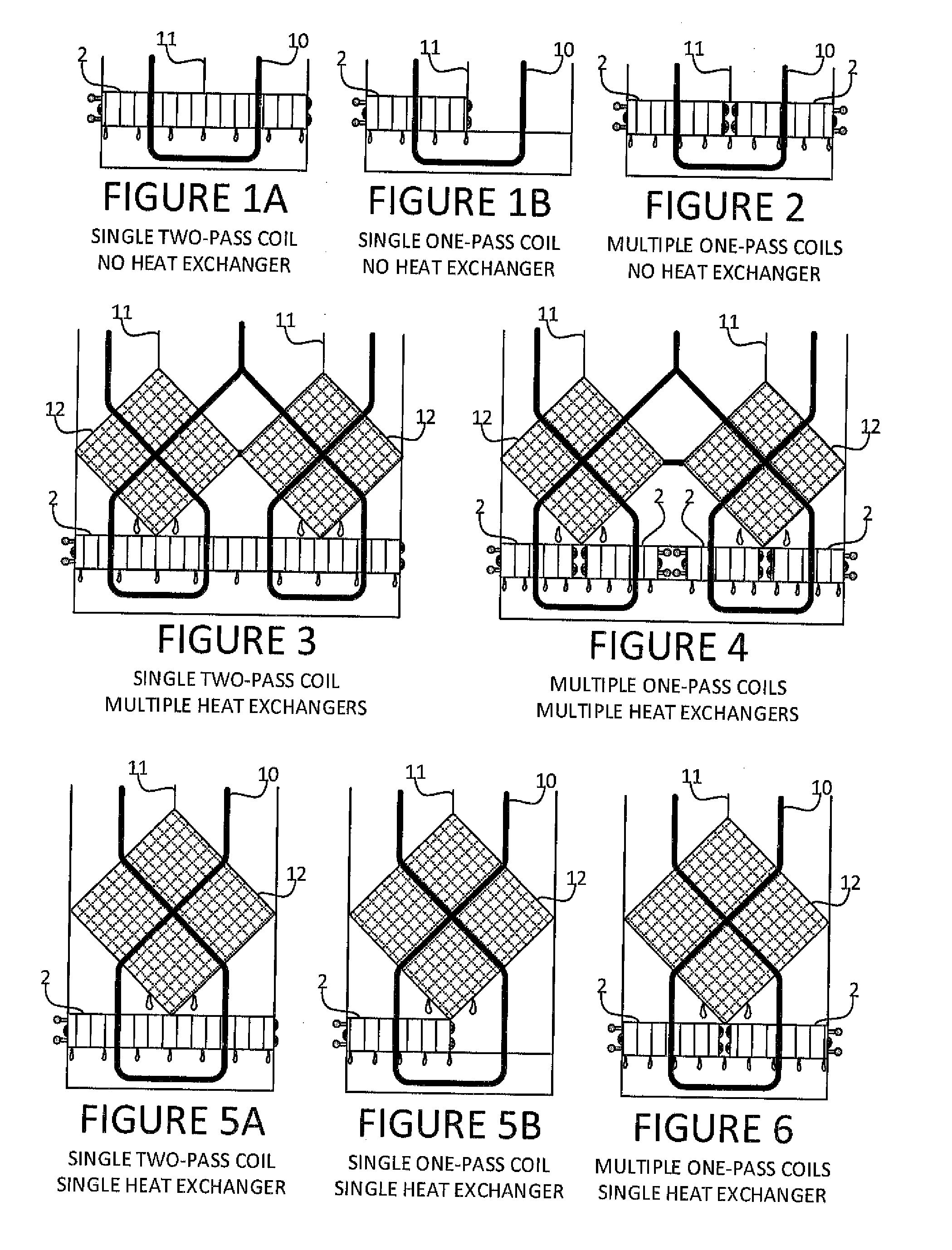Low temperature cooling and dehumidification device with reversing airflow defrost for dehumidification and water generation applications where cooling coil inlet air is above freezing
a technology of defrosting device and airflow, which is applied in the direction of defrosting, heating type, domestic cooling apparatus, etc., can solve the problems of mechanical cooling and dehumidification system, restricting airflow, and accumulating frost, so as to avoid air restriction
- Summary
- Abstract
- Description
- Claims
- Application Information
AI Technical Summary
Benefits of technology
Problems solved by technology
Method used
Image
Examples
Embodiment Construction
[0046]The device of this invention uses a reverse airflow arrangement to defrost a frosted cooling coil while not interrupting operation. Automatic air dampers are used to reverse the airflow when the defrost threshold is reached. Any type of serviceable damper such as a swing damper or a louvered damper can be used. This system is useful for low temperature cooling and dehumidification in situations where the cooling coil inlet air is above freezing, however exiting air below freezing can be supplied if desired. It is advantageous for operation if the coolant flow and temperature internal to the cooling coil are regulated to create the conditions for frost formation to begin closer to the air leaving side of the active cooling coil, and to regulate the rate of frost buildup to be consistent with the rate of defrosting.
[0047]FIG. 1 shows a schematic representation 1 of a typical cooling coil illustrating airflow through the cooling coil. Also shown in FIG. 1 is a perspective view of...
PUM
 Login to View More
Login to View More Abstract
Description
Claims
Application Information
 Login to View More
Login to View More - R&D
- Intellectual Property
- Life Sciences
- Materials
- Tech Scout
- Unparalleled Data Quality
- Higher Quality Content
- 60% Fewer Hallucinations
Browse by: Latest US Patents, China's latest patents, Technical Efficacy Thesaurus, Application Domain, Technology Topic, Popular Technical Reports.
© 2025 PatSnap. All rights reserved.Legal|Privacy policy|Modern Slavery Act Transparency Statement|Sitemap|About US| Contact US: help@patsnap.com



